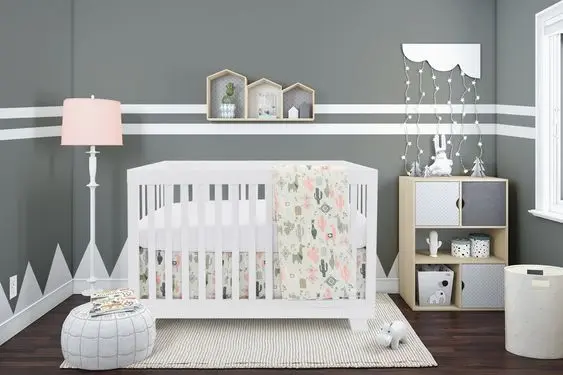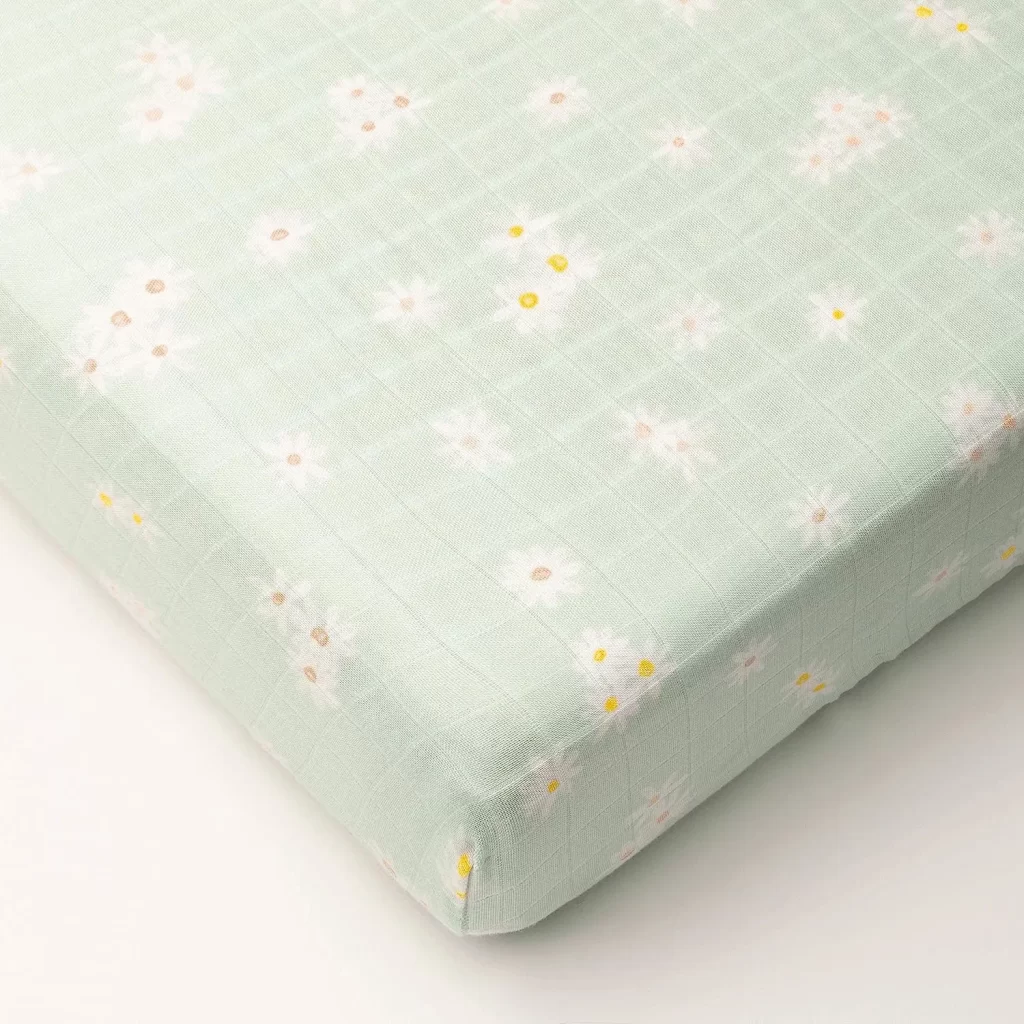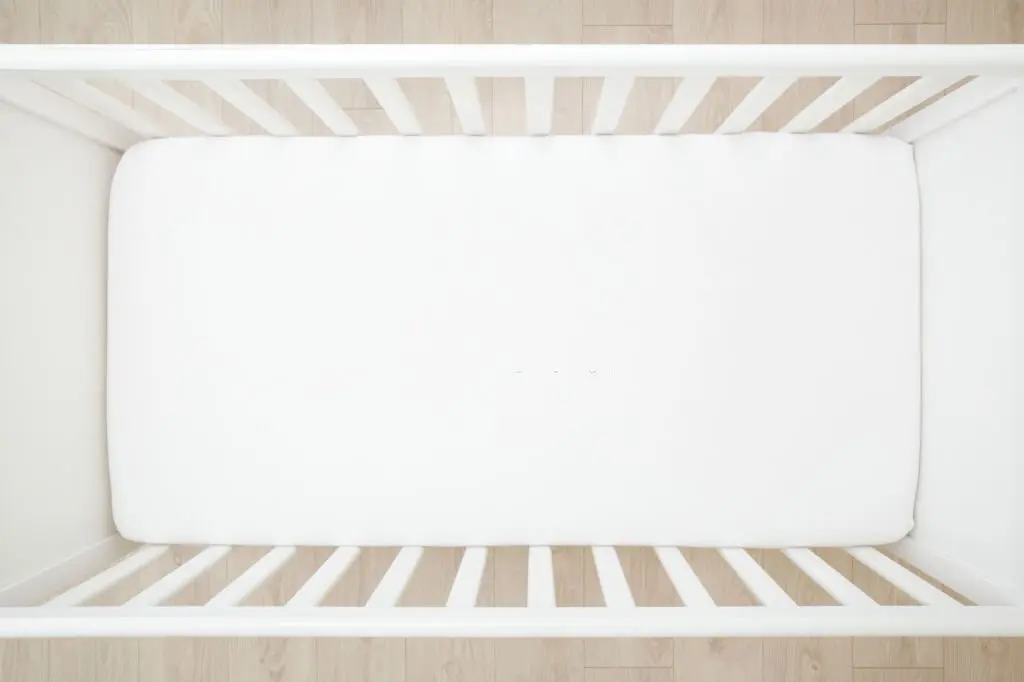What Type of Bedding is Best for a Baby

Introduction to what type of bedding is best for a baby
Choosing a safe baby mattress can be a daunting task for new parents. In a bid to ensure the health and safety of your little ones, it’s crucial to consider factors such as mattress firmness, its materials, and the bed linen.
As much as your child’s comfort is important, their safety cannot be compromised. This article guides you through the process of selecting safe bedding and a mattress for your baby.
Can good quality cot bed linen help babies sleep?

High-quality cot bed linen can have a significant impact on your baby’s sleep quality. Soft, breathable fabrics can keep your baby comfortable and less restless, fostering better sleep.
Hypoallergenic materials are preferred as they minimize risks of allergies and skin irritation, thereby promoting peaceful sleep. Furthermore, opting for durable materials ensures that the linen will withstand frequent washes while maintaining its comfort and texture.
Tips for getting your little one ready for bed
Establishing a bedtime routine is essential for your baby. This might involve bath time, a gentle massage, and reading or singing lullabies to your child.
Moreover, maintaining a consistent sleep schedule can help condition their internal body clock, leading to better sleep patterns.
Also, keeping the room temperature comfortable and making sure their cot bedding is clean, cozy, and safe, aids in preparing your little one for a sound sleep.
The best bedding & bed sheets for new parents

For new parents, opting for baby bedding and bed sheets made from organic, hypoallergenic fabrics like cotton or bamboo can be a great start.
Such materials are gentle on your baby’s skin, offer excellent breathability, and are easy to clean. Besides, it’s advisable to choose fitted sheets for safety reasons as they minimize the risk of suffocation.
Bedding tips
Choose bedding that is durable, easy to clean, and safe for your baby. Avoid fluffy comforters, quilts, and pillows in your baby’s crib, as they can increase the risk of suffocation.
Fitted sheets are recommended over loose sheets for safety purposes. Make sure any bedding you choose meets the safety standards and is free from harmful substances.
Easy to wash bedding
Consider bedding that is machine washable and dryable, as it ensures easy maintenance. Opting for materials that retain their texture and form even after frequent washes can ensure long-term comfort for your baby.
Go for White

White bedding isn’t just aesthetically pleasing; it’s also practical. White is less likely to contain harmful dyes and bleach. Furthermore, it can show stains easily, ensuring you’re aware when the bedding requires cleaning.
Protect mattress and pillows
Using a waterproof mattress protector can safeguard the mattress from spills or diaper leaks. This not only enhances the lifespan of the mattress but also helps maintain a hygienic sleep environment for your baby.
Choosing the right mattress size
Choosing the correct mattress size is integral to your baby’s safety. Ensure that the mattress fits snugly within the crib, leaving no gaps on the sides where your baby could potentially get stuck.
Opt for breathable fabrics
Breathable fabrics help in maintaining a comfortable temperature, reducing the risk of overheating. Fabrics such as cotton and bamboo are excellent choices as they allow for air circulation and wick away moisture, ensuring a cool and comfortable sleep environment for your baby.
Consider a hypoallergenic mattress
If your family has a history of allergies, it would be wise to consider a hypoallergenic mattress. These mattresses are designed to prevent the accumulation of allergens such as dust mites, which can irritate your baby’s skin and respiratory system.
Avoid loose bedding
Loose bedding can pose a suffocation risk for your baby. Instead of loose blankets, consider using sleep sacks or other safe alternatives that will keep your baby warm without posing a safety hazard.
Regularly check for wear and tear
Regularly inspect your baby’s mattress for signs of wear and tear, such as sagging or lumps. If you notice these signs, it’s time to replace the mattress. A worn-out mattress may not provide the necessary firmness and could pose a safety risk.
Cleaning the mattress
Keeping the mattress clean is essential for your baby’s health. Use a mild detergent and warm water to clean any spills or stains, and let it air dry thoroughly before putting sheets back on. Consider using a waterproof mattress protector to safeguard against leaks and spills.
Avoid second-hand mattresses
While it might be tempting to save money with a second-hand mattress, it is generally advised against. You can’t be sure of the mattress’s history, how it was stored, or whether it’s been properly cleaned. It may also have lost its firmness over time, which could pose a safety risk.
Proper crib setup
Finally, ensure the crib is properly assembled according to the manufacturer’s instructions. Check regularly for loose screws or broken parts, as these can pose serious safety risks for your baby.
When it comes to your baby’s sleep environment, safety is paramount. Always follow professional guidelines and consult your pediatrician if you have any doubts or questions.
Parent sleep advice
As parents, prioritizing good sleep hygiene for your baby can inadvertently ensure your own restful sleep. Using a baby monitor can provide peace of mind, allowing you to rest while your baby is sleeping.
Additionally, sharing the nightly responsibilities between partners can alleviate the strain and ensure both parents get enough rest.
Conclusion on what type of bedding is best for a baby
Ensuring your baby’s bedding and mattress are safe, comfortable, and easy to maintain is a crucial step in providing the best care for your little one.
Prioritize organic, hypoallergenic materials, and remember to adhere to safety guidelines for a secure sleep environment.
Also Read:
- How to Make Baby More Comfortable in Crib
- How to Prevent Baby From Hitting Head on Crib
- How To Keep Baby From Rolling Over In The Crib: An Ultimate Guide
FAQs on what type of bedding is best for a baby
What type of baby bedding fabric is best for little ones?
Organic, hypoallergenic fabrics like cotton or bamboo are ideal for baby bedding. They are soft, breathable, and gentle on the baby’s skin.
Which baby brand should I rely on for branded baby bedding products online?
Many brands offer high-quality baby bedding products, but always ensure the brand you choose adheres to safety standards and uses baby-safe materials.
Which is the best material for a baby pillow?
For babies, a firm, flat surface is recommended over pillows. When they are old enough to safely use a pillow, consider breathable, hypoallergenic materials like organic cotton.
Is it important to buy organic cotton clothing or bedding for a baby? Are there any health benefits?
Yes, organic cotton is free from harmful chemicals and pesticides. It is gentle on the baby’s skin and reduces the risk of allergies and skin irritation.
When can I cover my baby with a blanket in her crib?
It is safe to introduce a blanket after your baby turns a year old. Until then, it’s advisable to stick to wearable blankets or sleep sacks for warmth.
When can babies sleep with pillows and blankets?
Babies can start using pillows and blankets safely when they are about 18 months old, as they can then move them away if they become too hot or are having difficulty breathing.
What bedding is safe for newborn?
Fitted sheets made from breathable, organic material on a firm mattress is safe for a newborn.
What kind of bed do babies need?
Babies require a bed with a firm, flat surface. This could be a crib, bassinet, or cradle that complies with safety standards.
How should baby mattress be?
A baby mattress should be firm, flat, fit snugly within the crib, and free from loose bedding or soft objects to reduce the risk of SIDS.
How should baby mattress be?
A baby mattress should be firm, flat, fit snugly within the crib, and free from loose bedding or soft objects to reduce the risk of SIDS.
Can babies sleep on regular mattress?
No, regular mattresses may not provide the firm support a baby requires, and can potentially increase the risk of SIDS.
What should you avoid in a baby mattress?
Avoid mattresses that are too soft, have saggy areas, or do not fit the crib properly. Also, steer clear of used mattresses due to potential hygiene issues and decreased firmness.
How do I know if my baby mattress is safe?
Check for firmness, a snug fit in the crib, and ensure it meets safety standards. It should also be free from signs of wear and tear, such as sagging areas.
